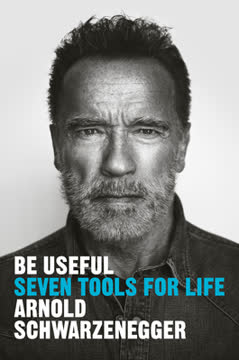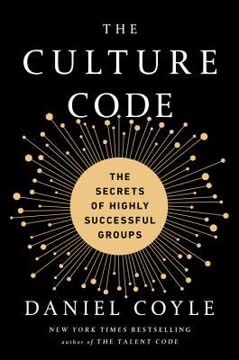Key Takeaways
1. Embrace Vulnerability and Take Risks in Art
"VULNERABLE is the only way we can feel when we truly share the art we've made."
Art requires courage. To create meaningful art, one must be willing to expose oneself to criticism and potential failure. This vulnerability is not a weakness, but a strength that allows for genuine connection with your audience. By embracing the discomfort of putting your work out into the world, you open yourself up to growth and meaningful impact.
Ways to embrace vulnerability in art:
- Share works-in-progress
- Seek constructive criticism
- Tell personal stories through your medium
- Experiment with new techniques or styles
Taking risks is essential. Playing it safe may feel comfortable, but it rarely leads to groundbreaking art. By pushing boundaries and challenging conventions, artists can create work that resonates deeply and sparks important conversations.
Examples of artistic risk-taking:
- Exploring controversial subjects
- Blending unexpected genres or mediums
- Rejecting traditional forms or structures
- Sharing deeply personal experiences
2. Commit Fully to Your Creative Vision
"COMMITMENT is the only thing that gets you through the chasm."
Half-hearted efforts rarely succeed. When embarking on a creative project, it's crucial to commit fully to your vision. This commitment involves dedicating time, energy, and resources to bringing your idea to fruition. Without this level of dedication, many promising concepts never make it past the initial stages.
Overcome obstacles with determination. The path from concept to completed artwork is often fraught with challenges. By maintaining a strong commitment to your vision, you'll be better equipped to navigate these difficulties and push through moments of doubt or frustration.
Strategies for maintaining commitment:
- Set clear goals and deadlines
- Create a supportive environment
- Develop a consistent creative routine
- Remind yourself of your initial inspiration
3. Focus on Impact and Connection, Not Just Effort
"EFFORT isn't the point, impact is."
Prioritize meaningful outcomes. While hard work is important, it's not the sole measure of artistic success. Instead, focus on creating work that resonates with your audience and makes a lasting impact. This shift in perspective can help guide your creative decisions and ensure that your efforts are directed towards meaningful goals.
Foster genuine connections. Art has the power to bridge gaps between people, cultures, and ideas. By prioritizing connection in your work, you can create pieces that not only showcase your skills but also touch hearts and minds.
Ways to increase impact and connection:
- Understand your target audience
- Explore universal themes and emotions
- Incorporate interactive or participatory elements
- Seek feedback and adjust accordingly
4. Use Feedback as a Lever, Not a Crutch
"FEEDBACK is either a crutch or a weapon. Use feedback to make your work smaller, safer, and more likely to please everyone (and fail in the long run). Or use it as a lever, to further push you to embrace what you fear (and what you're capable of)."
Leverage constructive criticism. Feedback can be a powerful tool for growth when used effectively. Rather than allowing it to limit your vision or make your work "safer," use it as a springboard to push your boundaries and explore new creative territories.
Balance external input with internal vision. While feedback is valuable, it's crucial to maintain your unique artistic voice. Learn to distinguish between constructive criticism that can enhance your work and suggestions that might dilute your vision.
Tips for using feedback effectively:
- Seek diverse perspectives
- Identify patterns in feedback
- Experiment with suggested changes
- Trust your instincts when feedback conflicts with your vision
5. Initiative Is the Privilege of Picking Yourself
"INITIATIVE is the privilege of picking yourself. You're not given initiative, you take it."
Empower yourself as an artist. In today's interconnected world, artists have unprecedented opportunities to showcase their work without relying on traditional gatekeepers. By taking initiative and actively promoting your art, you can create your own opportunities for success and recognition.
Cultivate a proactive mindset. Instead of waiting for permission or validation from others, adopt a mindset of self-motivation and self-promotion. This approach can lead to unexpected opportunities and collaborations.
Ways to take initiative in your artistic career:
- Start a blog or portfolio website
- Engage with your audience on social media
- Organize your own exhibitions or events
- Collaborate with other artists
- Submit your work to competitions and galleries
6. Pursue Better, Not More
"MORE is not the goal of the artist. Better is the artist's dream."
Quality over quantity. In a world often obsessed with productivity and output, it's important to remember that artistic value isn't measured in volume. Focus on refining your craft and creating work that truly represents your vision, rather than producing a large quantity of mediocre pieces.
Continuous improvement. Strive for constant growth and evolution in your artistic practice. This pursuit of "better" can lead to more innovative and impactful work over time.
Strategies for pursuing "better":
- Regular self-reflection and critique
- Study masters in your field
- Experiment with new techniques
- Seek mentorship or advanced training
- Set challenging personal goals
7. Art Is Born from Internal Struggle
"PAIN is the truth of art. Art is not a hobby or a pastime. It is the result of an internal battle royal, one between the quest for safety and the desire to matter."
Embrace the creative tension. The process of creating meaningful art often involves internal conflict and emotional struggle. This tension between the desire for comfort and the urge to create something significant can be a powerful driving force in artistic expression.
Transform struggle into art. Rather than avoiding or suppressing difficult emotions or experiences, use them as fuel for your creative work. Some of the most impactful art throughout history has emerged from artists grappling with personal or societal challenges.
Ways to channel internal struggle into art:
- Keep a journal to explore your thoughts and emotions
- Create a series based on a personal challenge
- Use metaphor to express complex feelings
- Collaborate with others who have similar experiences
8. Quality Is a Given, Mattering Is the Goal
"QUALITY, like feedback, is a trap. To focus on reliably meeting specifications (a fine definition of quality) is to surrender the real work, which is to matter."
Move beyond technical proficiency. While technical skill is important, it's not the ultimate goal of artistic creation. Strive to create work that resonates on a deeper level, challenges perspectives, or sparks important conversations.
Define your own measures of success. Instead of focusing solely on external benchmarks of quality, develop your own criteria for what makes your art meaningful and impactful.
Questions to consider when aiming to matter:
- What unique perspective does my work offer?
- How does my art contribute to broader conversations?
- What emotions or thoughts do I want to evoke in my audience?
- How can my work inspire change or new ways of thinking?
9. Remix and Reimagine to Create Something New
"REMIX, reuse, respect, recycle, revisit, reclaim, revere, resorb. Art doesn't repeat itself, but it rhymes."
Build upon existing ideas. Creativity often involves combining or reimagining existing concepts in new ways. Don't be afraid to draw inspiration from other artists or works, as long as you transform and reinterpret these influences to create something uniquely your own.
Respect intellectual property. While remixing and reimagining are valuable creative techniques, it's important to understand and respect copyright laws and intellectual property rights. Ensure that your work, while inspired by others, is ultimately original and transformative.
Techniques for remixing and reimagining:
- Combine elements from different genres or mediums
- Recontextualize familiar imagery or themes
- Update classic works for contemporary audiences
- Explore cross-cultural interpretations of common themes
10. Persist Through Uncertainty and Lack of Guarantees
"The WARRANTY of merchantability is a legal principle that guarantees that something you buy will do what the seller promises it will. Your work in art doesn't come with one."
Embrace uncertainty. The artistic journey is inherently unpredictable, with no guarantees of success or recognition. Accept this uncertainty as part of the creative process, and use it as motivation to continually improve and innovate.
Develop resilience. The ability to persist in the face of setbacks, criticism, or lack of immediate success is crucial for long-term artistic growth. Cultivate a mindset that values the process of creation and personal growth, regardless of external outcomes.
Strategies for building artistic resilience:
- Celebrate small victories and milestones
- Develop a support network of fellow artists
- Practice self-compassion during challenging times
- Set both short-term and long-term goals
- Regularly revisit your artistic "why" or purpose
Last updated:
Review Summary
V Is for Vulnerable is a unique picture book for adults that offers motivational wisdom on embracing vulnerability and creativity. Readers praise its simplicity, profound messages, and ability to inspire. Many find it comforting and empowering, appreciating its encouragement to persist in artistic endeavors and step outside one's comfort zone. The book's format, reminiscent of children's literature, is seen as both quirky and effective. While some wish for more depth, most reviewers find it a quick, impactful read that can be revisited for inspiration and personal growth.
Similar Books










Download PDF
Download EPUB
.epub digital book format is ideal for reading ebooks on phones, tablets, and e-readers.














